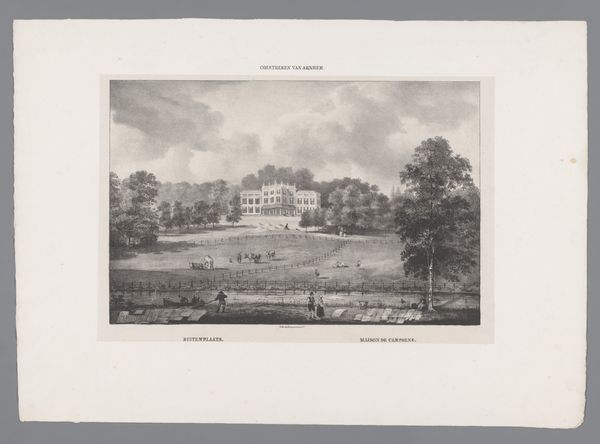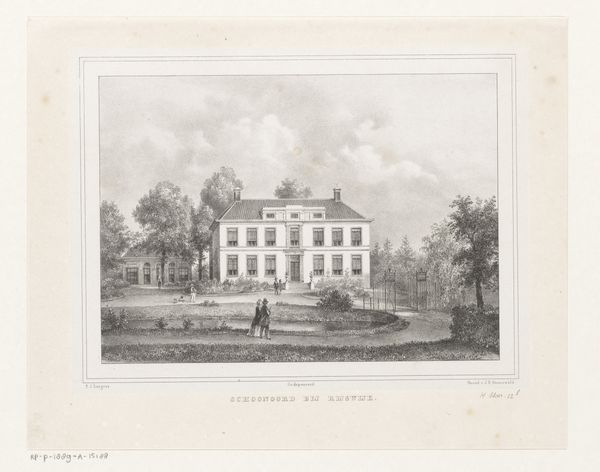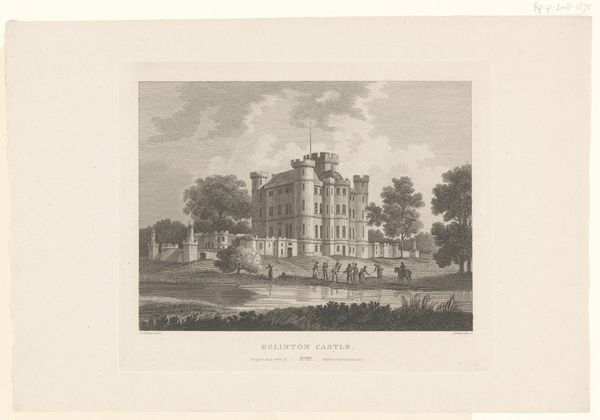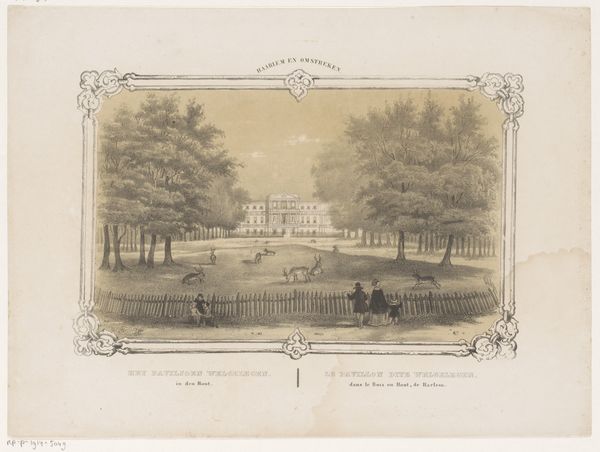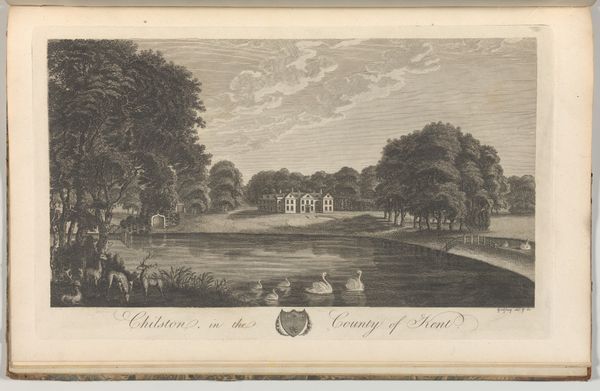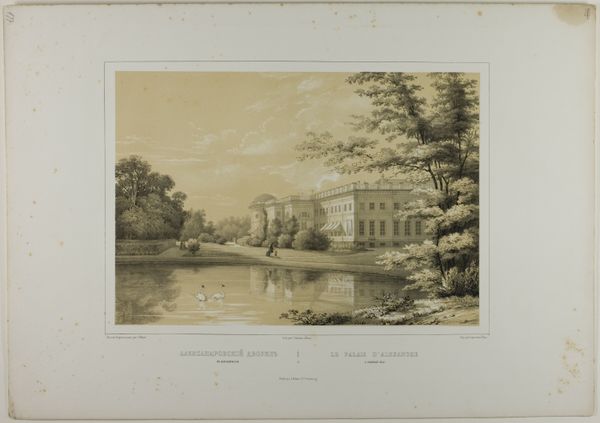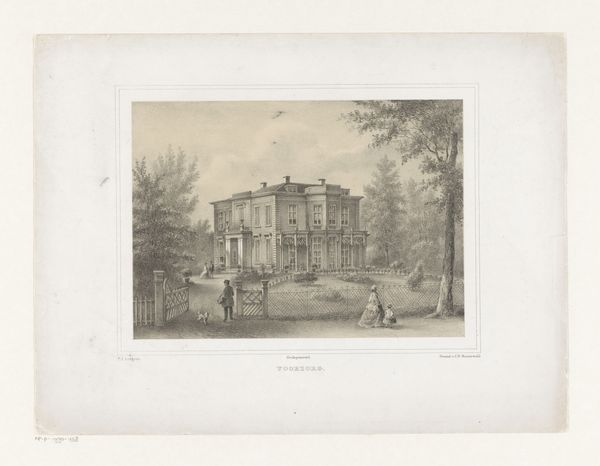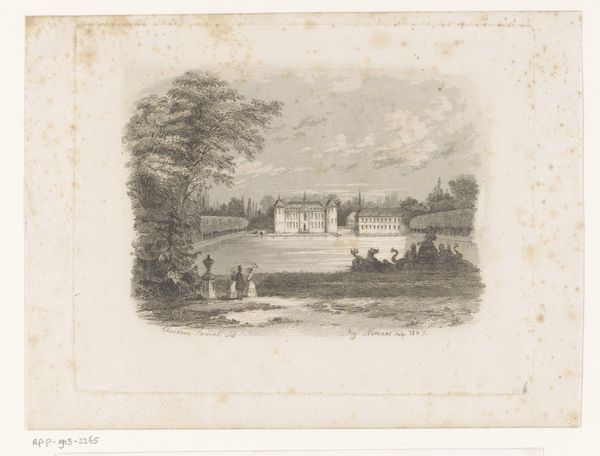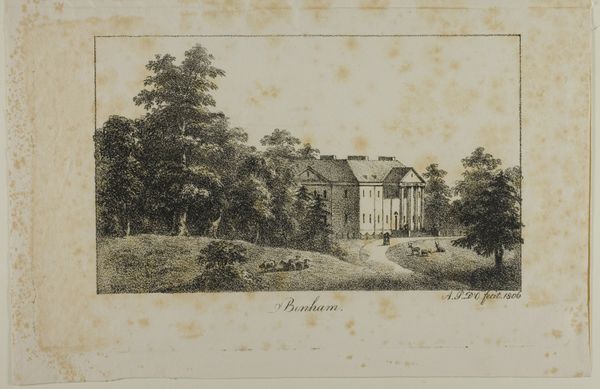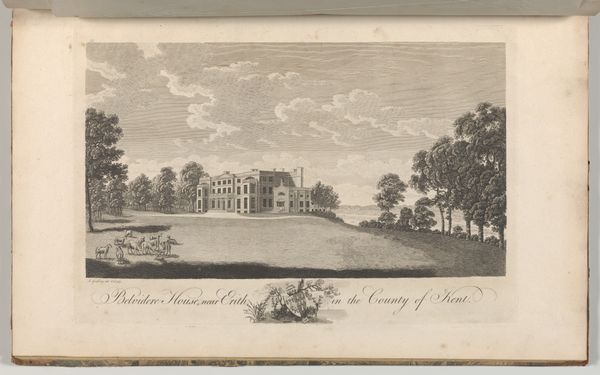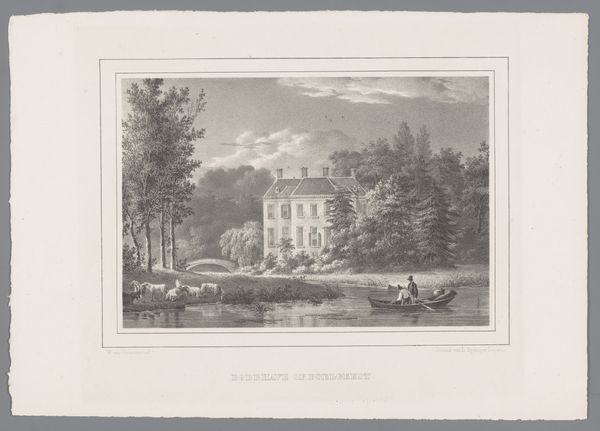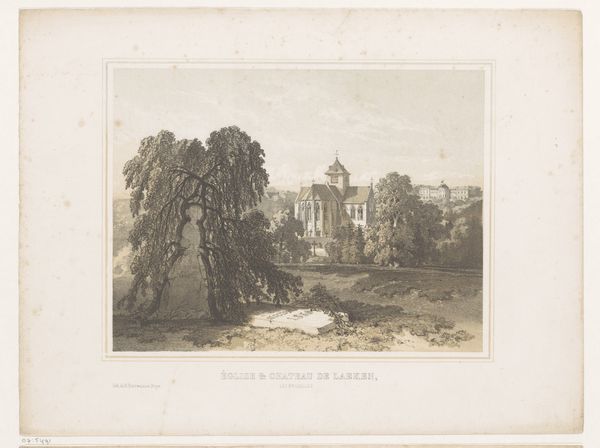
print, engraving
#
neoclacissism
# print
#
landscape
#
cityscape
#
engraving
Dimensions: height 398 mm, width 568 mm
Copyright: Rijks Museum: Open Domain
Curator: Today we are looking at "View of Claremont House from the Landscape Garden," created by Louis Jules Arnout between 1855 and 1856. It’s an engraving, showcasing Claremont House nestled within its grounds. Editor: It evokes such serenity, doesn't it? The graded tonality in the shading is really calming and harmonious, lending a timeless quality to the stately home. The balanced, centralized architecture draws your eyes. Curator: Absolutely. The image really exemplifies the 19th-century fascination with neoclassicism. Notice how the composition invites contemplation on social status. Claremont House wasn't simply a residence, it symbolized power and prestige, built to impress. Editor: The semiotics are rather transparent. The eye is led by the sloping topography of the land as well as the calculated placement of all objects and shapes contained. I am also intrigued by Arnout's artistic technique. What sort of printing process would you hypothesize produced these effects? Curator: Arnout utilizes fine engraving lines to capture texture and luminosity which creates subtle shadows in the landscape. One can assume the goal of neoclassicism here to emulate harmony through a synthesis of landscape, wildlife, and domicile in nature. This choice is an implicit validation of aristocracy. Editor: Right, but I wonder, could there also be commentary, not just glorification, about aristocratic land ownership? Depicting both the sheep and deer within the image serves as a kind of... taxonomy of use, wouldn't you say? As the viewer looks closer they recognize that they're included in this hierarchical construction too. Curator: That's an astute point. Perhaps the idyllic scenery and pastoral elements also present an idealized version of country life, somewhat detached from its actual social and economic realities, offering, indeed, a gentle critique. Editor: It definitely gives a fresh perspective on Claremont House's position during that time and the different potential purposes an image like this might serve within the market. It highlights a complex interchange between an aristocratic institution and visual aesthetics in Europe. Curator: Yes, seeing past the tranquil beauty and analyzing those visual power dynamics is crucial. It's quite enriching when form meets the nuances of social history.
Comments
No comments
Be the first to comment and join the conversation on the ultimate creative platform.
